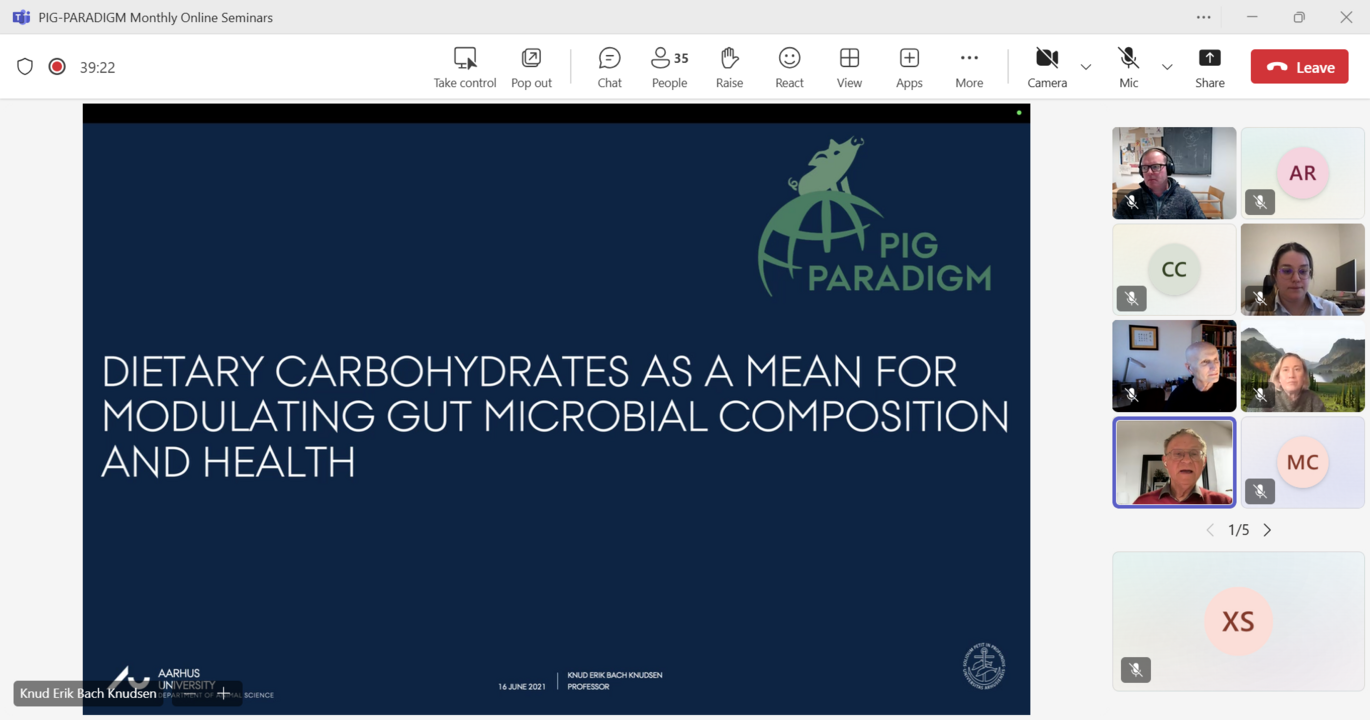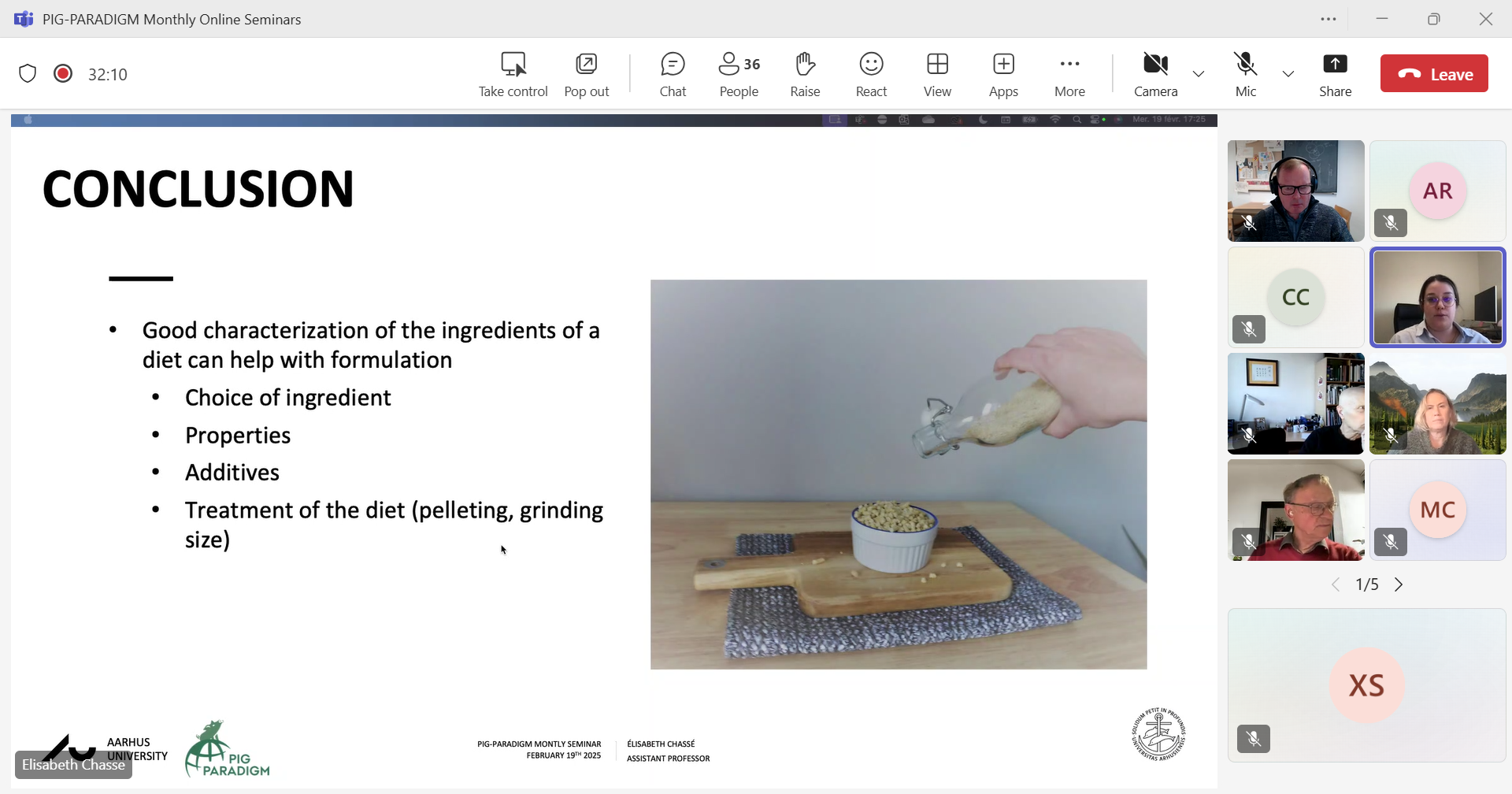February Monthly Seminar Recap
Our February 2025 Monthly Seminar, organized by the Nutrition Pillar, featured two insightful presentations from researchers at the Department of Animal and Veterinary Sciences, Aarhus University.




Our February 2025 Monthly Seminar, organized by the Nutrition Pillar, featured two insightful presentations from researchers at the Department of Animal and Veterinary Sciences, Aarhus University.
🔬 Presentation 1: "Characterizing Diets: Focus on Carbohydrates" by Tenure-track Assistant Professor Élisabeth Chassé.
In her presentation, Élisabeth shared insights gained from analyzing non-starch polysaccharides and oligosaccharides, which enhance our understanding of complex carbohydrate matrices and dietary fiber. She emphasized that a comprehensive characterization of carbohydrates in ingredients and diets enables the development of highly targeted strategies to optimize the nutritional and functional utilization of dietary fiber. Unlike traditional fiber analysis methods, which primarily focus on crude fiber or neutral and acid detergent fiber fractions, this advanced approach provides a more detailed and accurate representation of fiber composition. By leveraging these refined methodologies, researchers can better assess the nutritional quality and physiological effects of dietary fiber, paving the way for improved diet formulations and precision nutrition strategies.
🔬 Presentation 2: "Dietary Carbohydrates as a Means for Modulating Gut Microbial Composition and Health" by Professor Knud Erik Bach Knudsen.
Knud Erik explored the strategic use of dietary fiber fractions in animal diets to modulate the gastrointestinal ecosystem of piglets. He highlighted how specific fiber components can support post-weaning gut health, potentially reducing the incidence of gastrointestinal infections, post-weaning diarrhea, and antibiotic use. His discussion underscored the importance of understanding the functional properties of fiber beyond its traditional classification, emphasizing how modern analytical techniques allow for a more nuanced approach to fiber selection. By moving beyond conventional fiber assessments, this research provides new opportunities to design diets that actively promote gut microbiota balance and enhance animal health and performance.A big thank you to our speakers for sharing their expertise and to everyone who joined the discussion! Stay tuned for next month’s seminar.